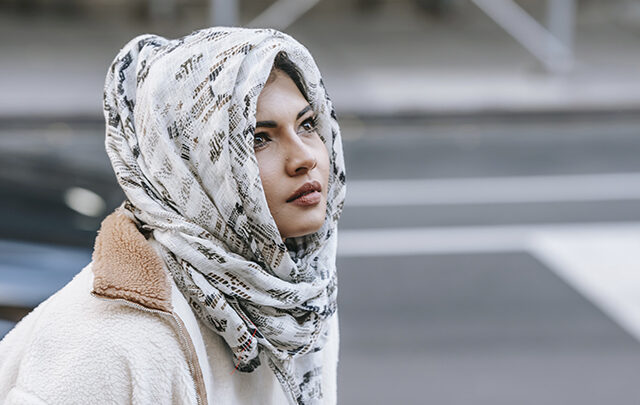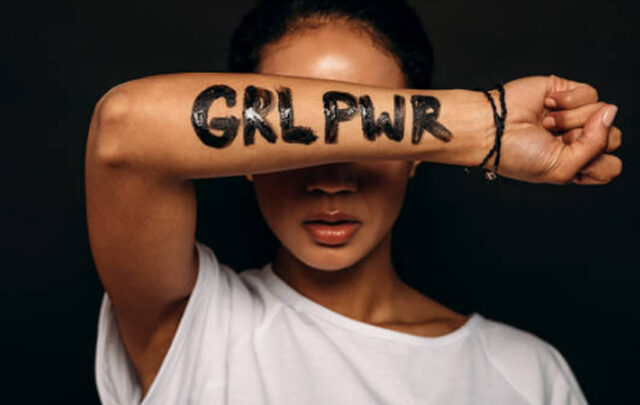The women who swarmed the streets and squares of cities across the Arab world, calling for the overthrow of repressive regimes that have been in power for decades, is a sight to remember. These demonstrations have been a very important signal that Arab society has begun to change for the better.
The active participation of women in the Arab Spring revolutions came as a shock to authoritarian regimes, which expected women to remain fearful of crowded demonstrations that often posed serious risks to their lives. Women’s activism during the 2011 protests confused both dictators and their security services, making clear the level of popular rejection of existing state institutions, and thus accelerating the downfall of several repressive regimes. It has also become clear that women can also challenge authoritarian regimes that are entrenched in their rejection of change and meaningful political reform, mired in nepotism, corruption, and bribery. Neither political nor cultural elites expected women to join the popular protest movement.
Today, some complain that the situation of women has worsened because counter-revolutions are accompanied by various forms of repression, armed violence and expropriation of public space everywhere. The Arab Spring has been blamed for this, which is surprising.
Popular protests in Arab countries were by no means the result of overzealousness in meeting the demands of foreign powers, nor the product of machinations and intrigues on the part of other countries, nor the caprice of local parties. A detailed analysis of the general human rights situation as well as of the political, economic, and social conditions in the countries where the popular uprisings took place clearly indicates the inevitability of these revolutions. Young people who grew up in an autocracy, in a climate of corruption and bribery, there was simply no other way out.
In 2011, women surprised everyone by turning suddenly from victims to leaders of protest. Today it is safe to say that women and young people were at the root of the Arab Spring and paid a high price for their participation, both during and after the revolutionary uprisings.
Why were women so unexpected? Perhaps because they, like the youth of these countries, were the most powerless victims of corrupt regimes that had no respect for human dignity and did not give their citizens the right to choice, basic freedoms, and equal rights. In other words, women were the main beneficiaries of change, the most interested in ensuring that change did not stop for a single day.
Women were not only the most active participants in revolutions, but also the main victims of counter-revolutions: as soon as reactionaries considered themselves victors, the first thing they did was to take revenge on women. But revolutionaries never forget their revolution – people keep dreaming and sooner or later put their dreams into practice.
The women who were at the forefront of the Arab Spring demonstrations were, to their great disappointment, almost never allowed to participate in political life: they were far less represented in the higher echelons of power than one would have expected. The very low participation of women and youth in transitional governments is a consequence of the incomplete nature of the Arab revolutions. However, later developments showed that it was in their interest not to participate in these governments: they were able to remain in the role of observers, noticing and recording the shortcomings and mistakes of the authorities. During the transition period, they have been the ones who have been sobering and critical of governments and pro-government circles. Women have done their best to promote democratic change, ensuring high turnout in all elections. Yet women’s political activism, which reached its peak during the Arab Spring, has declined significantly since then.
To a large extent, the highest potential of women’s and youth protest has gone to waste, and one of the reasons for this is the lack of political forces that recognize the key role of these groups in decision-making and state-building. This state of affairs will not change until young people and women form new political parties that make good use of their energy and ideas. Despite the very low level of women’s participation in state structures, during the Arab Spring women were able to engage in political freedoms, taking part in street marches and in organized opposition activities.
By resorting to violence, the counterrevolutionaries have left neither transitional governments nor revolutionary structures any chance for political development and the formation of democratic institutions that could improve these states. So far, only Tunisia seems to have escaped the reefs of the counterrevolution safely. Unlike Egypt, Yemen, and Libya, where all achievements were lost in coups and counterrevolutions, the rights and freedoms won by Tunisians in the struggle against the regime remained the property of all citizens. It is known that the range of rights and freedoms in the countries participating in the Arab Spring is extremely wide, and that the gains of the revolution include freedom of expression, assembly and the press, as well as freedom of association and demonstration. These rights should not be underestimated, as they mobilize society for further political development and the reforms necessary to achieve their goals.




MOST COMMENTED
Largest protests
How Leaderless Protests Work: Horizontal Movements and Collective Decision-Making
Forms of protests
The Right to Protest: How Rallies and Pickets Influence a Democratic Society
Forms of protests
Digitalization of Protest: How Social Media and Technology Are Changing Street Demonstrations
Largest protests
Digital Technology Revolution – Reshaping Modern Activism
Forms of protests
Advanced Acoustic Protection for Confidential Discussions
Forms of protests
Psychology of Protest: What Motivates People at Rallies?
Largest protests
Rallies Against Air Travel: A Rising Movement in the Climate Crisis Era